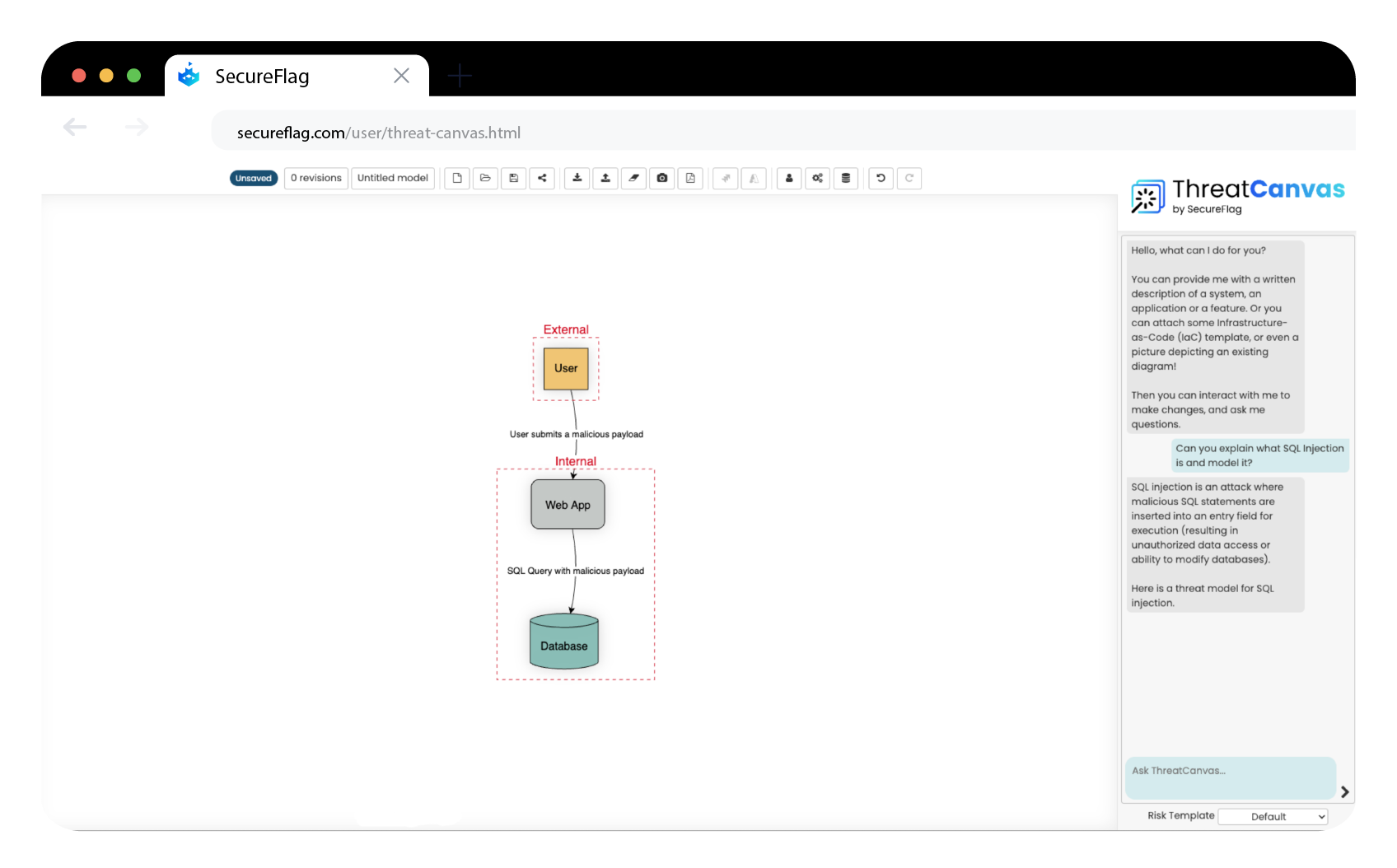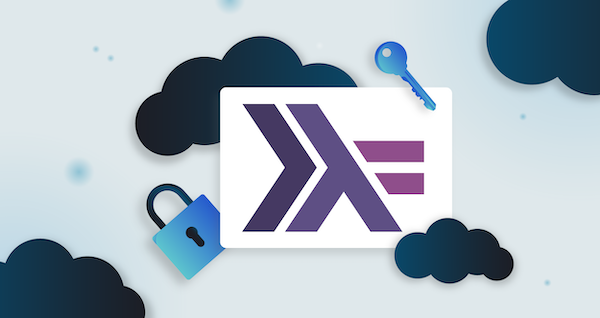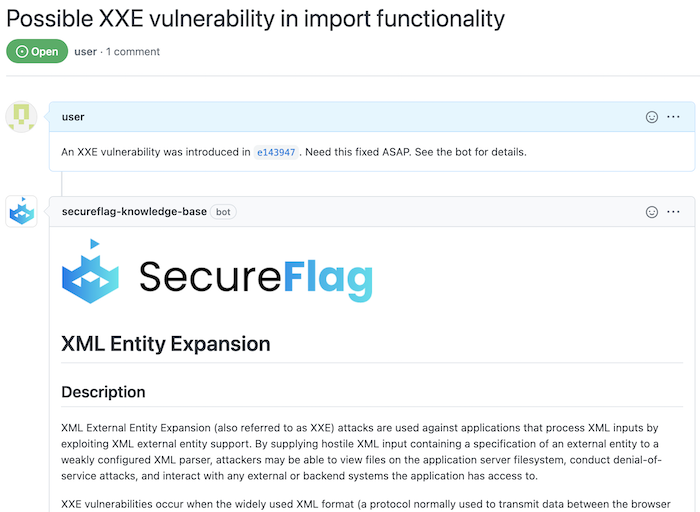SecureFlag is always striving for innovation in cybersecurity Training and Threat Modeling, as our latest update to ThreatCanvas demonstrates. ThreatCanvas Assistant ushers in a new era in automated threat modeling, making the process smoother, more interactive, and engaging for developers and security professionals alike.
ThreatCanvas Assistant is powered by AI and designed to revolutionize how we approach threat modeling. With this new addition, ThreatCanvas becomes a collaborator specializing in details, by identifying and mitigating potential security threats. The Assistant enables users to interact with the platform through a chat interface, opening up a domain of previously unattainable possibilities.
One of the most exciting features of ThreatCanvas’ new Assistant is its ability to generate threat model diagrams from textual descriptions. Developers can describe their system’s architecture or specific security scenarios, and the Assistant will translate these narratives into comprehensive threat models. This saves time and ensures no details are lost in translation between the developer’s vision and the threat model representation.
ThreatCanvas Assistant is not just a tool, but a virtual consultant that actively contributes to the threat modeling process. It offers suggestions for potential threats and controls, empowering developers and security teams to stay one step ahead of potential vulnerabilities.
What’s more, ThreatCanvas Assistant supports incremental updates, allowing users to refine their threat models through ongoing dialogue with the AI. Meaning that as a project evolves, so too can its threat model, ensuring that security considerations are always up to date.
The Assistant also serves as an educational tool, offering explanations for vulnerabilities and how they can be modeled on the diagram, aiding in the immediate threat modeling process, and helping users expand their understanding of secure design and secure coding principles.

Looking ahead, SecureFlag is working on further expanding the capabilities of the ThreatCanvas Assistant. Soon, users will be able to upload files such as images of existing diagrams, Infrastructure as Code (IaC) files, meeting minutes, or architectural documents, and the Assistant will transform these into interactive threat models. This upcoming feature promises to make transitioning from traditional documentation to dynamic threat modeling seamless and efficient.
SecureFlag is committed to transforming the conversations surrounding threat modeling. New features like ThreatCanvas Assistant are just the beginning, making threat modeling an activity that developers can independently undertake without the constant need for security team intervention and emphasizing the cost-effectiveness of early problem detection. Identifying issues during the design phase through threat modeling is not just cheaper but also now scalable with ThreatCanvas, ensuring that potential vulnerabilities are addressed promptly and efficiently, significantly reducing the cost and complexity of remediation at later stages.


